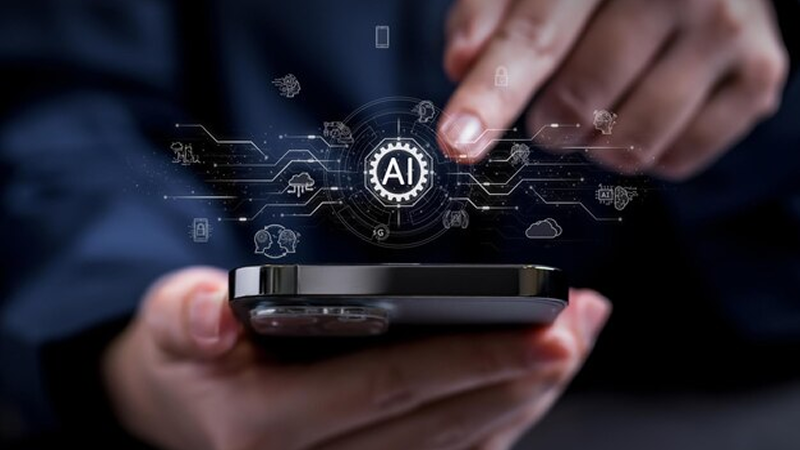Human Testing for AI Applications: Key Strategies for Effective Evaluation

AI applications are advancing quickly in all industries worldwide by automating processes, making decisions, and creating new experiences. The hype continues to be generated about such applications, ranging from self-driving cars to AI-based recommendation systems. The global AI market is likely to reach $1.8 trillion in 2030 and is already being translated into healthcare, finance, retail, and many more applications. Despite the remarkable progress, it is still difficult to operationalize and develop an AI system to achieve optimal algorithmic efficiency. Human testing, therefore, becomes essential in ensuring that such applications are effective, reliable, and user-friendly. This article discusses the importance of human testing for AI applications and the main strategies involved in their effective evaluation.
What is Human Testing for AI Applications
Human testing for AI applications refers to evaluating AI systems involving human testers. It is a crucial aspect of artificial intelligence development to ensure that the system behaves as expected in real-world scenarios. Traditional software testing usually concentrates on the functionality of code. In contrast, real-world AI testing examines the machine’s performance on such factors as accuracy, usability, and whether its results conform with human intuition and behavior.
Why AI Systems Cannot Be Fully Evaluated Without Human Input
Advanced AI systems cannot be tested without human intervention. Artificial intelligence models work with huge amounts of data, and their accuracy and performance depend on context, user interaction, or other outside variables that will not come close to automated tests. Human-driven AI testing is critical to evaluate how artificial intelligence adapts itself to the intricacies and whether it generates reliable, meaningful outputs. Without the human touch of AI, one cannot guarantee that the system would fulfill the user’s needs or act ethically in its decisions. Human testing is not the last verification step on an AI product life cycle checklist. Rather, it happens at the epicenter of ensuring the success of products. It guarantees proper, effective, and ethical utilization of AI models in real-life applications, making human testing part of the successful development of potent artificially intelligent systems.
Why Crowd Testing is Crucial for AI Applications

The applications of AI can vary widely, with different use cases requiring their own unique assessment approaches. Crowdsourced AI testing has an important role in evaluating such applications for various reasons.
Human Intuition
AI systems are tuned, particularly those used within customer contexts, to try and mimic human intuition. Users expect certain behavior from AI systems, be it from a recommendation algorithm or a chatbot, which feels natural to them. Human testers bring some real-life experiences and intuition that make their role in gauging user expectations on AI systems very important.
Usability Testing
AI usability testing is essential to ensure these systems are relatively simple and easy to use. Crowd testers from different backgrounds could highlight UX (user experience) insights by locating different pain points that would not occur in a controlled environment. This feedback enhances the interface, flow, and functionality of AI applications.
Human Annotators in Labeling Data
Data Annotation forms an essential activity in the process of training AI models. It’s human annotators that give every proper label to the data. These humans provide context data to raw data like images or text so that algorithmic systems can learn and make predictions on that basis. This process is essential for tasks like image recognition and sentiment analysis, where precision is key.
Bias Detection
AI models are susceptible to biases, and detecting these biases requires human oversight. Bias detection is a touchstone for the common crowd testers. Containing racial, gender, or socioeconomic biases helps establish whether an AI system is fair or biased.
Complexity of Real-World Scenarios
Testing artificial intelligence in the real world is challenging, as AI systems often have to deal with diverse inputs and scenarios. Crowd testing is possible for many more test scenarios with various forms of conditions and types of behavior that one can assume as a user. Such diversity is the secret to ensuring applications function properly in an unpredictably changing situation.
User Feedback
Crowdsourced feedback is an invaluable source of insight into how users interact with AI systems. Through AI feedback loops, developers are able to improve artificial intelligence applications based on user needs. This means that the entire life cycle of AI app development is constantly being improved in agreement with what the user expects.
Ethical Considerations, Discrimination, and Privacy Concerns
Human testing addresses ethical issues such as discrimination and privacy violations. Human testers will aid developers in identifying ethical risks posed by AI systems and in mitigating those risks to ensure a transition to responsible and ethical operation.
Types of Testing for AI Applications

AI applications require different types of testing to ensure their effectiveness and reliability.
Data Annotation and Labeling
Training AI models need high-quality data. Human annotators play an important part in annotating data used in AI tasks, including image recognition, natural language processing, or sentiment analysis. Qualified, accurate data annotation ensures model training in the right context for the accuracy and reliability that can be expected from any self-learning system.
Model Evaluation and Validation
Validation of an AI model indicates the assessment of the model in terms of performance and predetermined standards. In fact, human tests validate artificial intelligence models by taking the outputs when tested in real-life situations. In this way, it is ensured that the models will deliver the goods and do so reliably in various circumstances.
Functional Testing
Functional testing ensures that an AI application behaves as expected. It tests whether everything works correctly, from simple data entries to highly fine-tuned decision-making algorithms, through human testers.
User Experience (UX) Testing
UX testing is an evaluation of user interaction with AI systems. Developers receive feedback from various users on improvements in such areas as interface design, navigation, and overall user experience in AI.
Integration Testing
Integration testing is where the work of AI applications is further checked to see if it can work with other software and systems. Human testers then check if the algorithm can integrate with third-party APIs, databases, and other platforms that could ensure the interoperability of the two.
API Testing
API testing is one of the most critical tests of an AI application whose functions depend on an external API to pull data or process. Human testers perform evaluations to examine how well the AI interacts with APIs and how these interactions will affect data exchange or response handling.
Security Testing
Testing for security keeps an eye on the possible vulnerabilities in AI systems. Human testers simulate cyberattacks and attempt to penetrate design weaknesses in the system’s armor to confirm that the synthetic intelligence app is robust and secure from threats.
Main Benefits of Crowd Testing for AI Applications

Crowd testing offers several advantages for AI application development.
Cost-effectiveness
Compared to traditional in-house testing, crowd testing is more efficacious from a cost perspective. Companies involve crowd testers, allowing them to obtain feedback covering a more diverse spectrum and costing much less than hiring a dedicated onsite testing team.
Scalability
Crowd testing makes it possible to conduct huge test sessions across different locations and user groups. This extent of reach ensures that the applications of AI are put through paces in a variety of scenarios, enabling better performance model-wise in real-world applications. Additionally, crowdsourced testing provides flexibility in scaling the testing team up or down based on development cycles. When new features are actively being developed, companies can rapidly expand the testing pool. Conversely, during slower development phases, the team size can be reduced, ensuring cost efficiency without compromising quality.
Diverse Perspectives
The wide diversity inherent in crowd testing ensures that the AI system is assessed from sometimes contradictory viewpoints. This diversity also helps in surfacing issues that jetsam the minds of testers working in smaller test environments.
Rapid Feedback
Crowd testing encourages human feedback for AI and fast-tracking development. Developers can pinpoint problems and modify solutions quickly, releasing revised versions of the AI application for further testing.
Examples of Crowd Testing for AI
Here are some key examples of how crowd testing is applied:
- Image annotation. Crowd testers annotate images for object detection and face recognition tasks to ensure that AI can recognize and classify objects properly.
- Sentiment analysis and text classification AI. Annotate text using human annotator activity to allow artificial intelligence to understand the sentiment and context of writings.
- AI-powered recommendation systems. Crowd tests assess AI-powered recommendation systems because they are highly personalized and relevant in recommending.
- Translation. Crowd testers help make amends in the culture of AI translations: finding the differences that artificial intelligence misses.
- AI chatbots and virtual assistants testing. This ensures that the AI chatbots and virtual assistants can accommodate a wider range of user inquiries and give suitable, relevant, and helpful replies.
Wrapping Up
Crowd testing renders tremendous advantages to AI applications in terms of scalability, diversity, and cost. Testing entails soliciting inputs from multiple testers regarding an AI product’s performance under several scenarios so that it can be assessed with regard to aspects like accuracy or effectiveness. Human testing is critical in developing and deploying successful artificial intelligence applications for reliability, usability, and conformance with user expectations. A human-centered approach would be geared toward addressing the ethical issues, biases, and user needs. Crowd testing can thus be incorporated into the AI development process, assuring evolution and improvement toward actual artificial intelligence solutions that work in practice and are hence beneficial. Human testing is your safeguard against unreliable AI performance. From AI bias detection to real-world usability checks, we ensure your AI works as intended. Let’s build AI that’s accurate, ethical, and user-friendly—start testing with us today!

